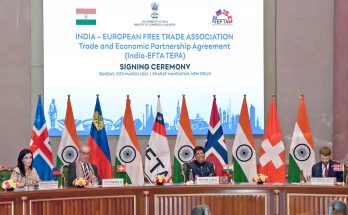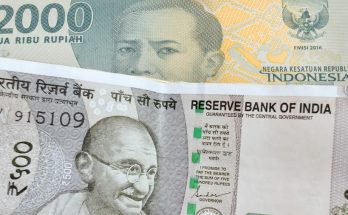 It is unbelievable that inflation about which we were so worried even a few months ago has come down to zero. For the last few years, the monetary policy was all about controlling inflation for which interest rates were hiked umpteen times. RBI governor Raghuram Rajan has maintained that the fear of high inflation has not yet disappeared completely. In November 2014 however, not only did the Wholesale Price Index came down to zero, but retail inflation or the Consumer Price Index also was at a low 4.4 per cent. It should bring much relief to the common man and woman because the real reason for inflation coming down is a fall in vegetable prices and of course petroleum prices.
It is unbelievable that inflation about which we were so worried even a few months ago has come down to zero. For the last few years, the monetary policy was all about controlling inflation for which interest rates were hiked umpteen times. RBI governor Raghuram Rajan has maintained that the fear of high inflation has not yet disappeared completely. In November 2014 however, not only did the Wholesale Price Index came down to zero, but retail inflation or the Consumer Price Index also was at a low 4.4 per cent. It should bring much relief to the common man and woman because the real reason for inflation coming down is a fall in vegetable prices and of course petroleum prices.
Food inflation has come down from 15.4 per cent in November 2013 to 3.1 per cent in November 2014. Vegetable prices came down by 28.6 per cent, mainly because of lower onion prices and also due to cheaper transportation costs. Overall, food inflation in November was 0.6 per cent as compared to 19.7 per cent last year. It is creditable that the Modi government has been instrumental in an increase in the supply of vegetables which has contributed to the easing of inflation.
The main contributor, however, of lowering inflation is the fall in petroleum prices as a result of higher supply from the US and lower global demand in the face of the unwillingness on the part of the Organization of the Petroleum Exporting Countries to cut supply. Yet, there is little rejoicing about the sudden and steep fall in inflation and already there is talk of deflation creeping up in the economy which is always a bad sign and will lead to low profits for corporate sector, retrenchment and low demand. A lot of urging and nudging is going on to make RBI change its stance and lower interest rates. While it is not a panacea for triggering a higher level of growth, it would certainly help industrialists in undertaking new investments/innovations that could lead to enhanced competitiveness.
More worrisome, according to some economists, is the falling industrial growth which has shrunk by 4.4 per cent. Manufacturing growth, whose component in the Index of Industrial Production is the highest at 75 per cent, fell by 7.6 per cent. Perhaps both factors – lack of new investment and slowing demand — are at play in bringing down manufacturing growth even though export growth has risen in the last one month. Exports grew at 7.3 per cent in November but imports rose by 26.8 per cent. Gold imports rose by 500 per cent. Imports of coal also rose.
The slackening of domestic consumer demand has been due to the long term inflationary trend and perhaps insecurity due to slower economic growth and lack of jobs for the youth. External demand has definitely slackened due to the stagnant growth in the EU and tepid economic recovery in the US.
Manufacturing growth contributes most to creation of jobs and even though IT and service industries are the fastest growing sector in the economy, its potential for job creation is low because it often requires technical expertise and knowledge of English. Every year around 10 million people are entering the labour force, mostly young. Unless manufacturing growth is faster, jobs will not be created. Today people are worried about job security even when they have jobs and are reluctant to part with money for increasing demand for consumer durables and capital goods.
The common man or woman is worried about rising health and education expenditure. High school and college fees and exorbitant rates of hospitalisation are making everyone except the super-rich cautious about spending. Fear of resurgent inflation is also there at the back of people’s minds.
Many are, however, spending on gold which also shows their lack of confidence in the country’s economic future. The substantial increase in gold imports has contributed to the widening of the trade deficit. The rupee which is vulnerable to the various fears about the current account deficit getting out of hand is already coming down vis-a-vis the dollar. A lower rupee will help exports no doubt but may create problems of volatility which is not good for attracting foreign investors.
The Prime Minister’s ‘Make in India’ slogan is a good idea if India can bag more foreign investment and it can increase employment and output and manufacturing growth. But as is well known, various hurdles remain. The environmental clearance requirement and difficulties in land acquisition are both seen as big hurdles by investors and the government has to take a clear stand. Both land distribution and environment are important for the country’s future. There will always have to be safeguards for those who lose their land to rapid industrialisation under the Land Acquisition Act 2013-Right to Fair Compensation, Resettlement and Rehabilitation, Transparency in Land Acquisition. It contains elements of land sellers’ rehabilitation and employment programme and added responsibility of the buyers. This Act should be supported and not amended. The country’s long term interests have to be kept in mind and there also has to be more employment generation through higher industrial growth. It is a big challenge for the Modi government which is committed to faster clearances and approvals and yet cannot alienate the small and tribal land owners.
The problem with slow industrial growth is that tax collections will also be poor and it raises the important question of whether the government will be able to meet the fiscal deficit target. Where will the government find the money to finance all its multi-crore projects? Various disinvestment targets have been singled out and the process could be expedited. Selling off coal blocks is also on the agenda.
On the whole, whether the government can keep its promise of providing jobs for all, reducing subsidies through direct cash payment, having a cleaner India and having a higher manufacturing growth, will have to be seen in 2015. Chances of having high GDP growth as hoped for by the Finance Minister will require much work on the industrial front, specially in providing good infrastructure. Unless industrial growth steps up, GDP growth cannot be higher.
(The writer is a Senior Fellow at Observer Research Foundation, Delhi)
Courtesy: ORF
Author Profile
- India Writes Network (www.indiawrites.org) is an emerging think tank and a media-publishing company focused on international affairs & the India Story. Centre for Global India Insights is the research arm of India Writes Network. To subscribe to India and the World, write to editor@indiawrites.org. A venture of TGII Media Private Limited, a leading media, publishing and consultancy company, IWN has carved a niche for balanced and exhaustive reporting and analysis of international affairs. Eminent personalities, politicians, diplomats, authors, strategy gurus and news-makers have contributed to India Writes Network, as also “India and the World,” a magazine focused on global affairs.
Latest entries
 DiplomacyApril 23, 2024Resetting West Asia, re-booting the world, but not fast enough: T.S. Tirumurti
DiplomacyApril 23, 2024Resetting West Asia, re-booting the world, but not fast enough: T.S. Tirumurti India and the WorldApril 22, 2024India’s G20 Legacy: Mainstreaming Africa, Global South in global agenda
India and the WorldApril 22, 2024India’s G20 Legacy: Mainstreaming Africa, Global South in global agenda DiplomacyApril 10, 2024Diplomat-author Lakshmi Puri pitches for women power at LSR
DiplomacyApril 10, 2024Diplomat-author Lakshmi Puri pitches for women power at LSR India and the WorldApril 6, 2024UN envoy pitches to take India’s solutions to the world stage
India and the WorldApril 6, 2024UN envoy pitches to take India’s solutions to the world stage







